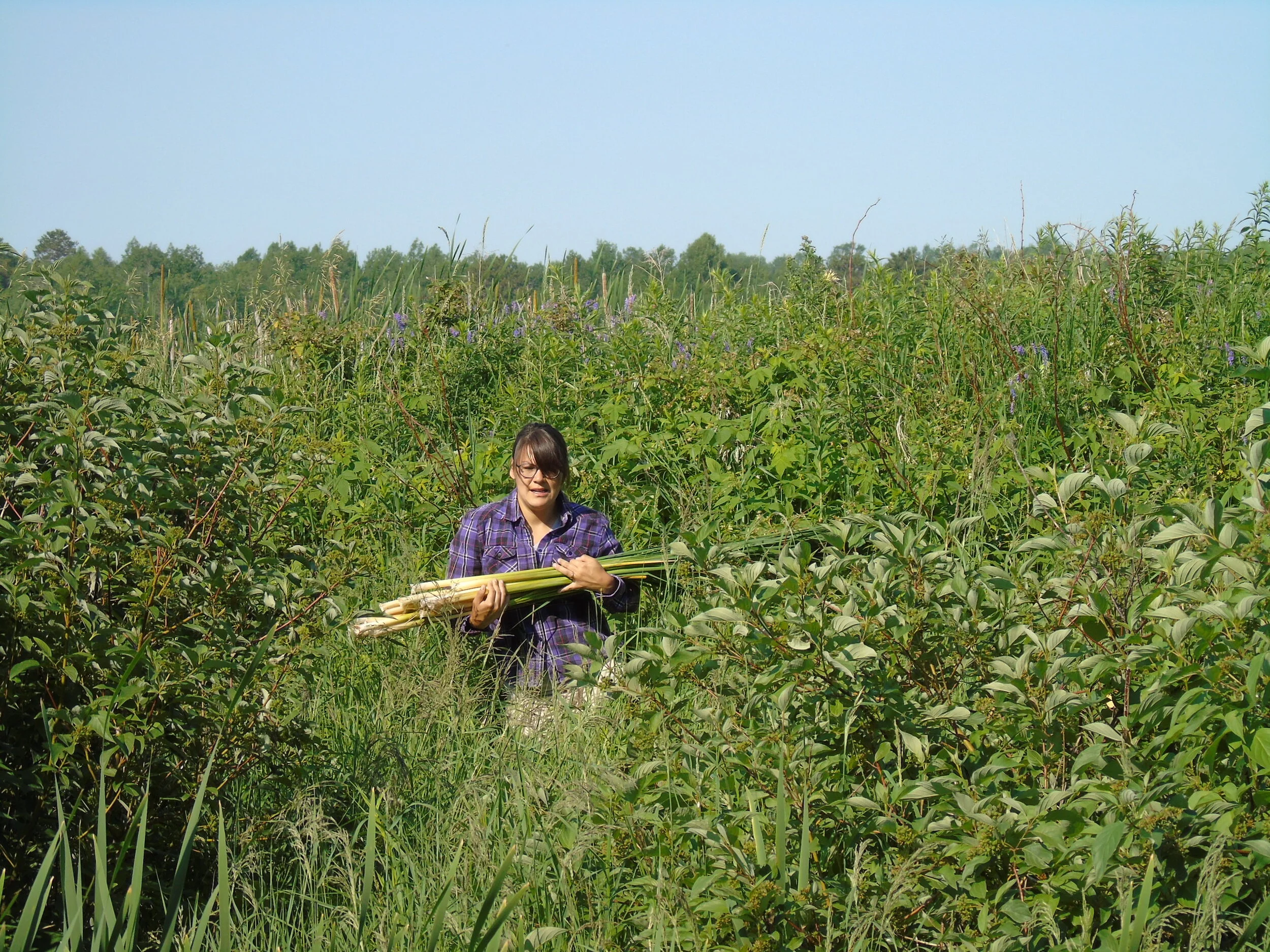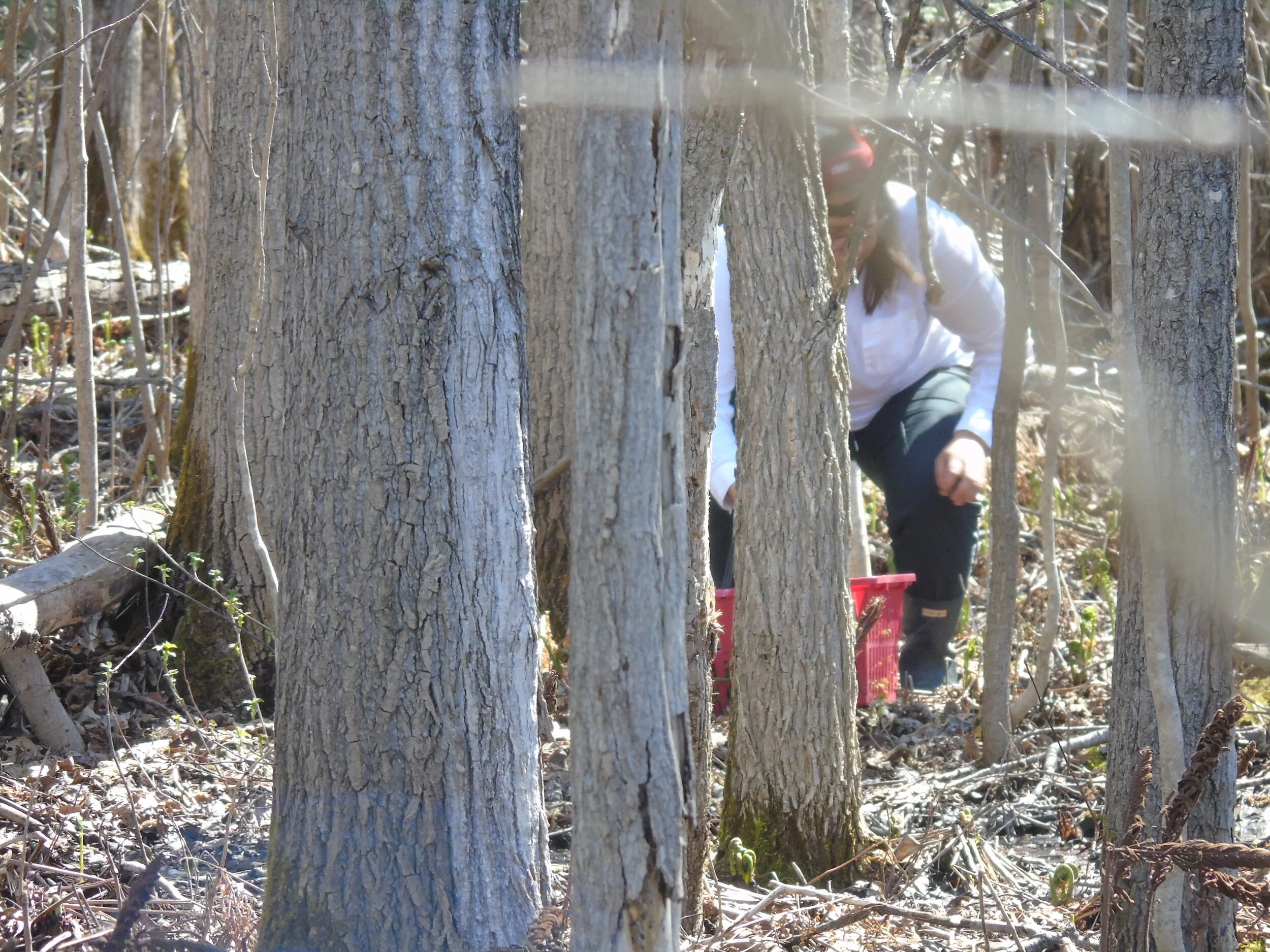Foraging
“Take what you need. Pay your respects. Leave the rest.”
Sustainability is an important principle for Timiskaming First Nation. The goal of this approach is to meet the present needs of the community while leaving enough in the forest for future generations of our community, the animals, and the forest.
Harvesting too many plants or mushrooms in one area can upset the ecological balance, allowing in too much light or warming up the soil differently. If you find a good patch, resist getting too enthusiastic. A good rule of thumb if you are unsure is not to take more than one out of three leaves, berries, or mushrooms in one area. Some species can sustain much higher levels of harvesting.
Harvesting & Processing Tips
Harvest on a dry, sunny day
The plant should be thoroughly dry
Use a basket, not a plastic bag
Making Herbal Tea
The standard dose is a half of cup three times a day
Use 30 g dried or 75 g fresh herb (leaves, flowers) for 500 ml water
You could also make a cup of tea with 1 or 2 teaspoons of dried herb
Place herbs in teapot.
Boil water and let it sit for a minute or so
Alternatively, remove the pot from the heat just before it boils
The water should not be vigorously boiling when it is added to the herbs
Pour over herbs, cover, and leave to infuse for 10 minutes
Strain and drink
Store the extra in a pitcher in a cool place or a fridge
Making an Infusion
An infusion is a stronger, more medicinal version of tea
A standard dose would be a cup and a half or two cups per day
Each plant and part of the plant requires different treatment. These instructions are approximate and can be adjusted
For Leaves
Use a quart canning jar with a lid
Add an ounce of dried leaves to the jar
Fill the jar to the top with boiling water
Cover with lid and let sit at room temperature for four hours
For Flowers
Use a quart canning jar with a clean lid
Add an ounce of dried flowers to the jar
Fill the jar to the top with water that is just below boiling. Flowers are more delicate and require less heat
Cover with lid and let sit at room temperature for two hours
For roots & bark
Use a pint canning jar with a clean lid
Use about an ounce of dried root
Fill the jar to the top with boiling water
Cover with lid and let sit at room temperature for 8 hours
Drink!
Harvesting Sweet Fern Fruit
Harvesting Roots

Additional Resources
Ethnobotany of the Ojibwe Indians
By Huron H. Smith
BULLETIN OF THE PUBLIC MUSEUM OF THE CITY OF MILWAUKEE Vol. 4, No. 3, Pp. 327-525, Plates 46-77 May 2, 1932
Includes Medicines, Fibers, Foods, and Dyes.
Our Knowledge Is Not Primitive: Decolonizing Botanical Anishinaabe Teachings
By Wendy Makoons Geniusz
Braiding Sweetgrass: Indigenous Wisdom, Scientific Knowledge and the Teachings of Plants
by Robin Wall Kimmerer
Traditional use of medicinal plants in the boreal forest of Canada: review and perspectives
Uprety et al. Journal of Ethnobiology and Ethnomedicine 2012, 8:7





